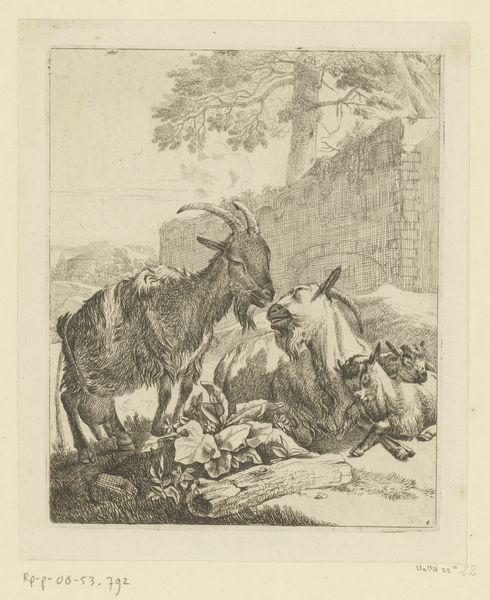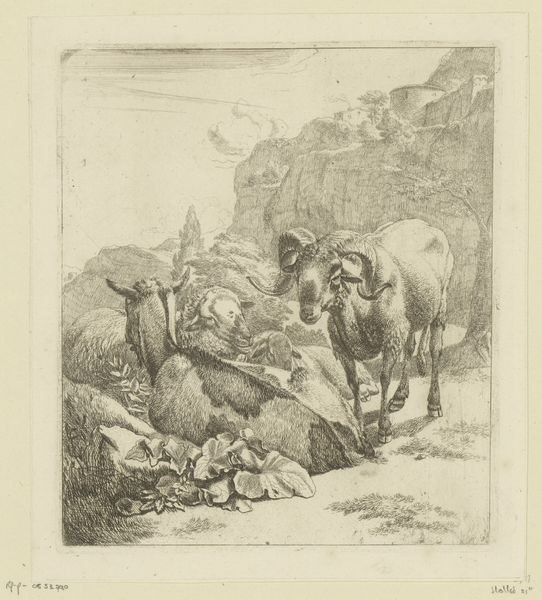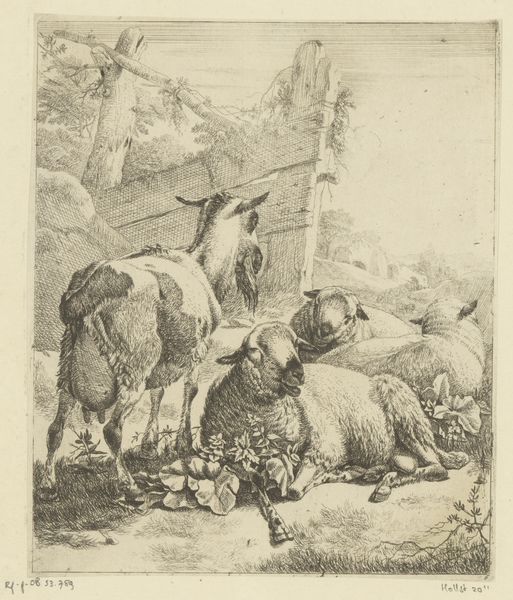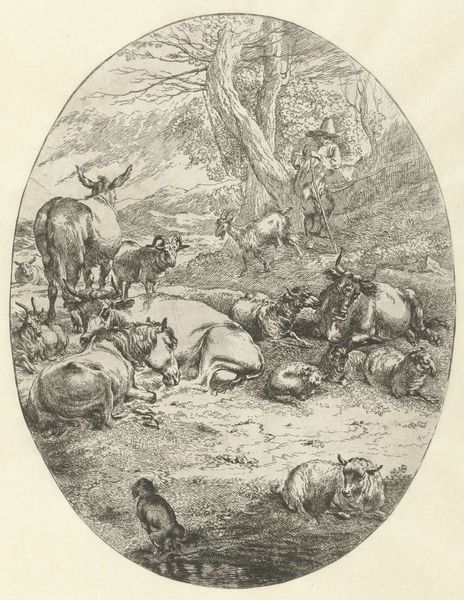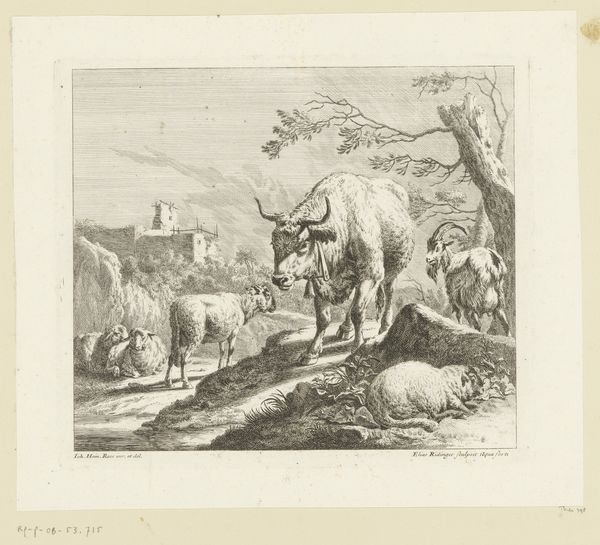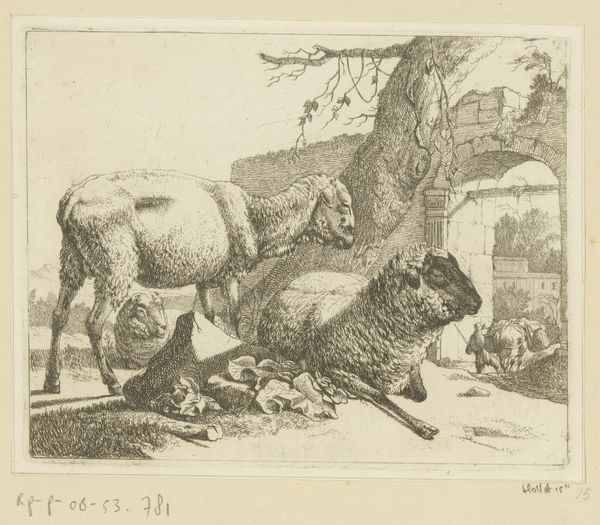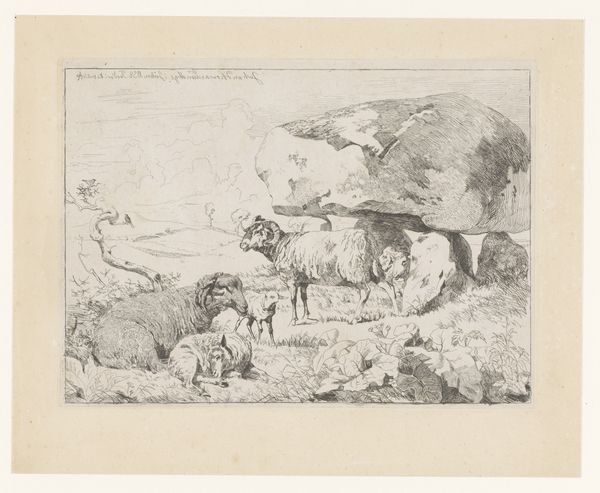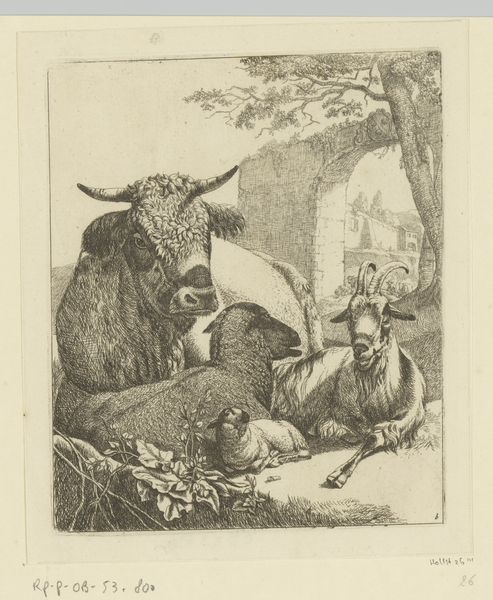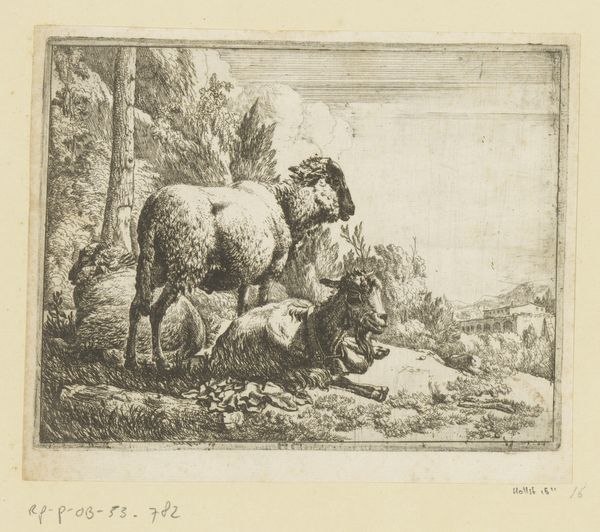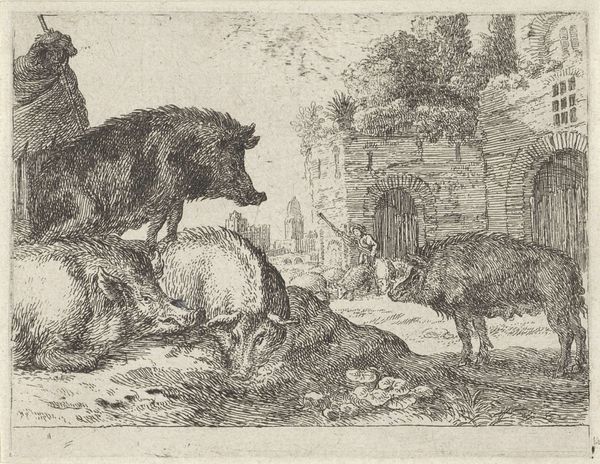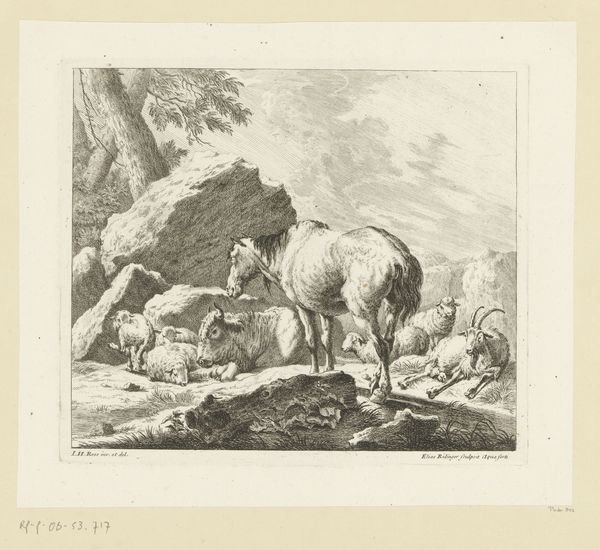
drawing, print, etching
#
pencil drawn
#
drawing
#
light pencil work
#
baroque
# print
#
pen sketch
#
etching
#
pencil sketch
#
old engraving style
#
landscape
#
personal sketchbook
#
pen-ink sketch
#
sketchbook drawing
#
pencil work
#
sketchbook art
Dimensions: height 198 mm, width 171 mm
Copyright: Rijks Museum: Open Domain
Curator: Johann Heinrich Roos created this etching, "Liggend ram en drie schapen bij houten hek," sometime between 1668 and 1670. What strikes you about it? Editor: I'm immediately drawn to the somber mood despite it depicting a seemingly pastoral scene. There's a strange stillness in the sheep's postures, a heaviness amplified by the monochromatic rendering. Curator: The artist, working in the Baroque style, likely aimed to idealize rural life, but from a modern perspective, especially considering historical agricultural practices, this serenity can feel quite loaded. Are we romanticizing a system that was often exploitative? Editor: Absolutely. The ram, for instance, resting so prominently in the foreground, is an ancient symbol. He stands in for masculine virility but also sacrifice. The fleece, the meat— these animals represent resources. Do you see other visual metaphors here? Curator: Consider the fence. It serves not only to enclose, which could evoke boundaries, restrictions and possibly ideas of property and ownership. Furthermore, in light of class struggles through history, this artwork makes me question the positionality of the observer – from what side of the fence do we view it? Editor: Intriguing observation. Visually, it guides our eye upwards towards the decaying tree behind the animals, suggesting perhaps themes of transience and decay within even idyllic settings. These could hint at a reflection on our own mortality but it’s filtered through the depiction of barnyard animals. Curator: Perhaps Roos seeks to critique social stratification using animal allegory, especially if his intended audience held nuanced perceptions of landscape art. These artworks, whilst appearing conventional and harmless, could easily be subtly undermining certain social and cultural attitudes through their careful visual choices and arrangement of images. Editor: Exactly. It reminds me how symbolism operates over time, retaining core meanings yet shifting in resonance depending on socio-historical context. Thanks for shifting my perspective; there are worlds within these humble barnyard symbols. Curator: And thank you for pointing towards how animals, often sidelined from art-historical consideration, remind us of our own fraught entanglements with power structures and environmental concerns.
Comments
No comments
Be the first to comment and join the conversation on the ultimate creative platform.
